Hybrid cars with manual transmission combine fuel efficiency and driver engagement, offering a unique blend of performance and eco-friendliness. Models like the Honda Civic Hybrid and CR-Z pioneered this rare configuration, providing enthusiasts with a distinct driving experience that balances economy and control;
Overview of Hybrid Cars
Hybrid cars combine an internal combustion engine with an electric motor, optimizing fuel efficiency and reducing emissions. They store energy through regenerative braking and use it to assist the engine, lowering fuel consumption. While most hybrids feature automatic transmissions, manual transmissions are rare but offer better driver control. Early models like the Honda Civic Hybrid pioneered this concept, blending eco-friendliness with performance. Hybrid technology continues to evolve, making these vehicles appealing to environmentally conscious drivers who value efficiency without sacrificing driving engagement.
Importance of Manual Transmission in Hybrids
Manual transmissions in hybrids enhance driver engagement and control, appealing to enthusiasts who value a more connected driving experience. They often improve fuel efficiency by allowing precise gear shifts, optimizing energy use. While less common, manual hybrids like the Honda CR-Z offer a unique blend of performance and eco-friendliness. This configuration attracts drivers seeking both environmental benefits and the satisfaction of manual driving, making it a niche but significant option in the hybrid market.

History of Hybrid Cars with Manual Transmission

The history of hybrid cars with manual transmission began with rare models like the 2003-2005 Honda Civic Hybrid, introducing eco-friendly performance with a stick shift option.
Early Models and Their Impact
The first hybrid cars with manual transmission, such as the 2003-2005 Honda Civic Hybrid, introduced a unique blend of fuel efficiency and driver control. These early models were groundbreaking, showcasing the potential of combining hybrid technology with a stick shift. They offered improved fuel economy without sacrificing the driving engagement that manual transmissions provide; Although rare, these pioneering vehicles set the stage for future innovations and proved that hybrid systems could coexist with manual gearboxes, appealing to eco-conscious enthusiasts who valued performance and efficiency.
Honda Civic Hybrid and CR-Z: Pioneers in Manual Hybrid Technology
The Honda Civic Hybrid and CR-Z were groundbreaking models that successfully paired hybrid technology with manual transmissions. The 2003-2005 Civic Hybrid introduced the second-generation IMA system, enhancing power and fuel efficiency. The CR-Z, with its sporty design, further showcased the potential of manual hybrids, offering a unique driving experience. Both models demonstrated Honda’s commitment to innovation, blending eco-friendly performance with driver engagement. Although no longer in production, these cars remain iconic examples of manual hybrid technology.
Challenges in Combining Hybrid Technology with Manual Transmission
Combining hybrid technology with manual transmissions presents significant technical challenges, including complex system integration and drivetrain compatibility issues, making such configurations rare and difficult to produce efficiently.
Technical Difficulties in Integration
Integrating hybrid technology with manual transmissions faces technical hurdles, such as synchronization between the internal combustion engine, electric motor, and manual gearbox. The system must seamlessly transition power delivery during shifts, which complicates drivetrain design. Additionally, maintaining optimal fuel efficiency while allowing driver control over gear changes presents engineering challenges, requiring precise coordination and advanced software solutions to ensure smooth operation and maximize performance benefits.
Drivetrain and Performance Issues
Hybrid cars with manual transmissions face drivetrain complexities due to the synchronization of engine and electric motor power delivery during gear shifts. This integration can lead to performance inconsistencies, such as uneven acceleration and potential disruptions in power flow. Additionally, the weight distribution from hybrid components like batteries and motors can affect handling, while regenerative braking systems may interfere with the natural feel of manual driving, complicating the overall driving experience and performance optimization.
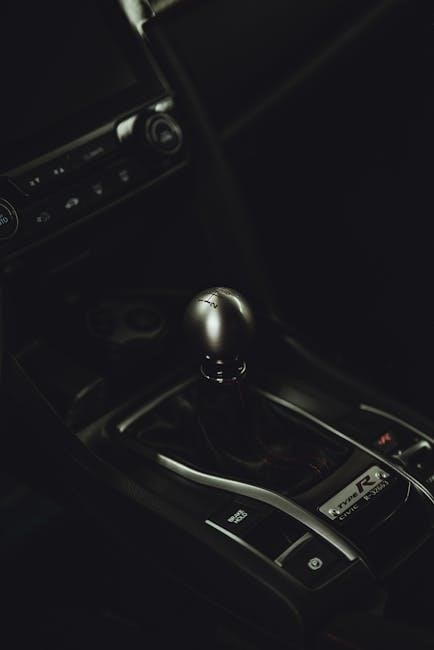
Benefits of Hybrid Cars with Manual Transmission
Hybrid cars with manual transmission offer enhanced fuel economy, lower emissions, and increased driver engagement. They combine the efficiency of hybrid technology with the control of manual driving, delivering a balanced experience for eco-conscious enthusiasts who prefer traditional gear shifting over automatic systems.
Fuel Efficiency and Performance
Hybrid cars with manual transmission achieve superior fuel efficiency due to driver control over gear shifts, optimizing power delivery. This setup enhances performance by minimizing energy loss, unlike automatic systems. The combination of hybrid technology and manual driving provides a responsive yet eco-friendly experience, appealing to enthusiasts seeking both efficiency and driving engagement. These vehicles excel in urban and highway conditions, offering a balanced blend of economy and agility.
Driver Engagement and Control
Manual transmissions in hybrid cars offer drivers greater control and engagement, allowing precise gear shifts that enhance the driving experience. This tactile connection fosters a sense of involvement, making every journey more enjoyable. Unlike automatics, manuals enable drivers to optimize power delivery, especially in hybrid systems, where engine and electric motor coordination is key. This feature attracts driving enthusiasts who value both efficiency and the thrill of hands-on control behind the wheel.
Current Availability of Hybrid Cars with Manual Transmission
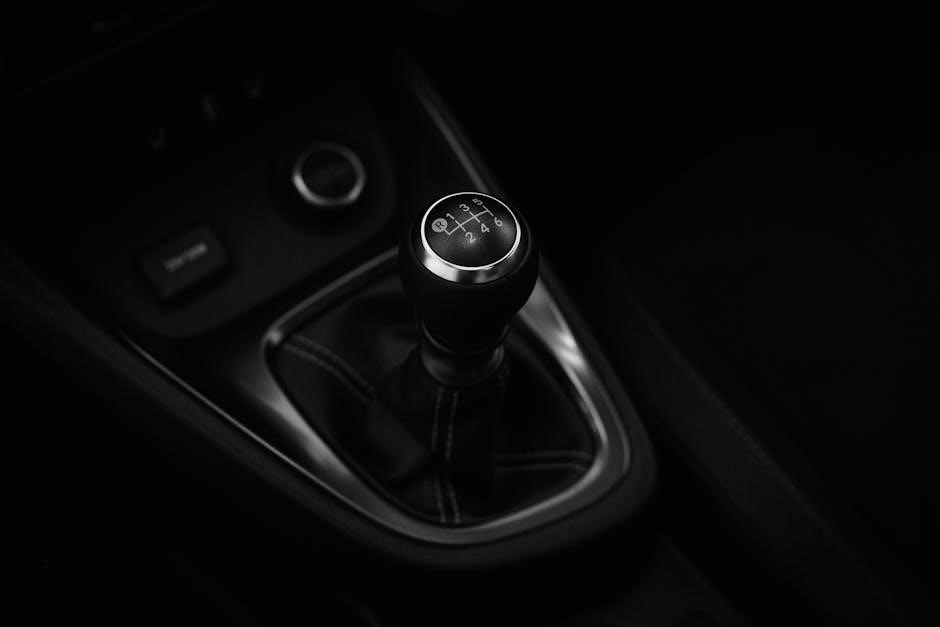
Manual hybrid cars are rare, with models like the Honda Civic Hybrid and CR-Z discontinued. Regional availability varies, with limited options in certain markets today.
Models Available in the Market
Hybrid cars with manual transmission are rare, but models like the Honda CR-Z and earlier Civic Hybrid showcased this combination. However, these models are now discontinued, making manual hybrids scarce in many regions. In the UK, some niche hybrids with manual options exist, though they are limited. The lack of widespread availability reflects consumer preferences and market trends favoring automatics. Despite this, enthusiasts continue to seek these unique vehicles for their blend of efficiency and driver involvement.
Regional Availability and Popularity
Hybrid cars with manual transmission are regionally limited, with rare availability in countries like the U.S. The UK offers some models, but selection is sparse. Popularity varies, with manual hybrids appealing to niche markets. Declining demand for manual transmissions globally has reduced their presence. Regional preferences and market trends significantly influence their availability, making manual hybrids a rarity in most areas. Enthusiasts often seek imports or used models to acquire these unique vehicles, reflecting their specialized appeal.
Future Trends in Hybrid Manual Transmission Cars
Advancements in hybrid technology and manual transmissions are expected to enhance fuel efficiency and performance. Upcoming models may prioritize sustainability, aligning with market shifts toward eco-conscious vehicles.
Upcoming Models and Innovations
Future hybrid cars with manual transmissions are likely to feature advanced drivetrains, integrating more efficient battery systems and optimized gear ratios. Automakers may introduce lightweight materials and improved combustion engines to enhance performance while maintaining fuel efficiency. Additionally, innovations in hybrid technology could lead to smoother transitions between electric and combustion power, offering drivers a seamless yet engaging experience behind the wheel.
Market Shifts and Consumer Preferences
The automotive market is shifting toward automatic and CVT transmissions, reducing the demand for manual hybrids. However, a niche group of driving enthusiasts still prefers manual transmissions for their tactile experience and control. Consumer preferences are increasingly leaning toward electric vehicles, but hybrid manuals remain a unique option for those seeking efficiency without sacrificing driving engagement.
Consumer Preferences and Demand
While manual hybrids appeal to driving enthusiasts for their control and engagement, overall demand is declining as automatics and electric vehicles gain popularity.
Why Some Drivers Prefer Manual Hybrids
Manual hybrids attract driving enthusiasts who value control and engagement. The tactile experience of shifting gears enhances the connection to the vehicle, offering a more immersive drive. Additionally, manual transmissions can optimize fuel efficiency in skilled hands, appealing to eco-conscious drivers who seek both performance and environmental benefits. This unique blend of efficiency and driving enjoyment makes manual hybrids a preferred choice for those who cherish the art of driving.
Declining Popularity of Manual Transmissions
Manual transmissions in hybrid cars have seen a decline in popularity due to the rise of automatic and CVT options. Modern drivers often prioritize ease and convenience, especially in hybrid vehicles designed for efficiency. The shift toward automatics aligns with the seamless integration of hybrid technology, which emphasizes smooth power delivery. As a result, manufacturers have focused less on manual hybrid options, making them increasingly rare in the market.
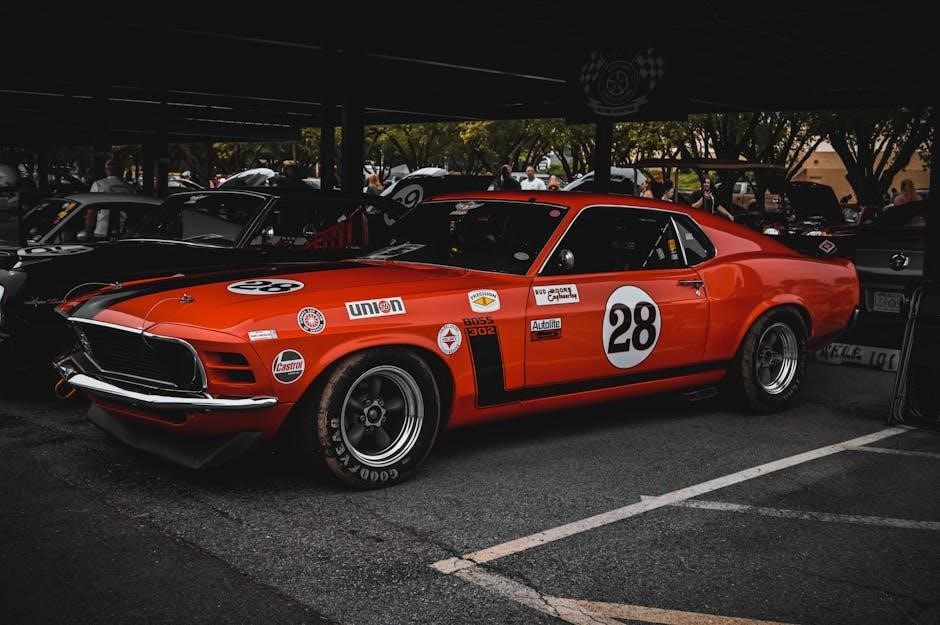
Maintenance and Cost Considerations
Manual hybrid cars often require less maintenance than their automatic counterparts due to fewer complex components, potentially lowering long-term ownership costs.
Maintenance Requirements for Manual Hybrids
Maintenance for manual hybrids often mirrors that of conventional vehicles, with regular oil changes and inspections. However, the hybrid system may require specialized checks, such as battery health monitoring. Manuals typically have fewer complex components than automatics, reducing repair costs over time. Clutch wear, a common issue in manuals, can vary depending on driving habits. Overall, manual hybrids are relatively low-maintenance but benefit from adherent manufacturer schedules to optimize efficiency and performance.
Cost Efficiency and Long-Term Savings
Manual hybrids often offer superior cost efficiency due to lower purchase prices and reduced fuel consumption. The absence of complex automatic components can lower maintenance and repair expenses. Over time, savings from improved fuel economy and reduced wear on drivetrain parts add up. While upfront costs may be slightly higher for hybrids, the long-term financial benefits, especially for high-mileage drivers, make manual hybrids a practical choice for budget-conscious consumers seeking eco-friendly transportation.
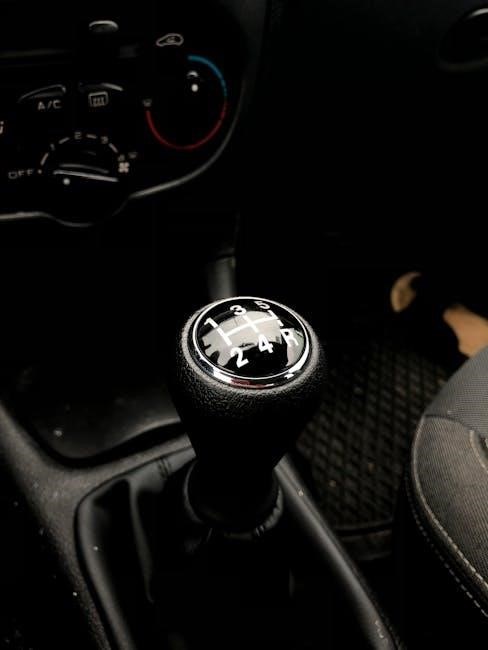
Environmental Impact of Manual Hybrid Cars
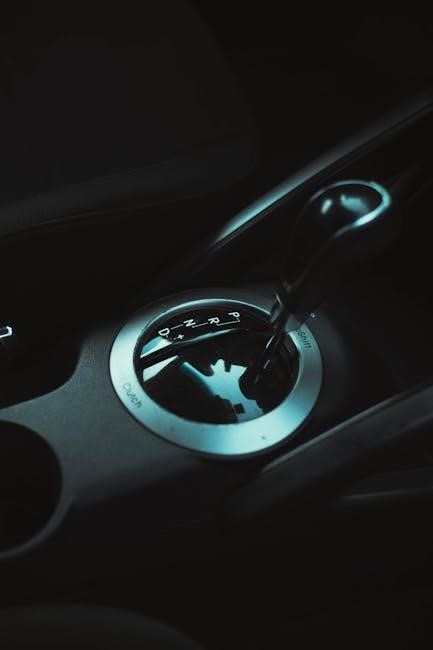
Manual hybrid cars significantly reduce emissions and fuel consumption, offering an eco-friendly alternative. Their efficient drivetrains minimize environmental impact while maintaining performance, making them a sustainable choice for drivers.
Emission Reductions and Eco-Friendliness
Hybrid cars with manual transmission significantly reduce emissions by optimizing fuel efficiency and minimizing energy waste. Their eco-friendly design ensures lower carbon footprint compared to traditional vehicles, promoting sustainability.
The combination of manual gears and hybrid technology enhances mileage and reduces pollution, making these cars an environmentally responsible choice for drivers seeking both performance and green benefits.
Comparison with Automatic Hybrids
Hybrid cars with manual transmission offer distinct advantages over automatic hybrids, including better fuel efficiency and lower emissions. The manual option provides drivers with more control, enhancing the driving experience while maintaining the eco-friendly benefits of hybrid technology.
Hybrid cars with manual transmission offer a unique blend of efficiency and driving engagement, making them a niche choice for eco-conscious enthusiasts seeking control and performance.
Final Thoughts on Manual Hybrid Cars
Manual hybrid cars offer a unique blend of fuel efficiency, driver engagement, and eco-friendliness, appealing to enthusiasts who value both performance and environmental responsibility. While rare, models like the Honda Civic Hybrid and CR-Z have proven the viability of this configuration. Despite technical challenges, these cars provide a distinct driving experience, making them a niche but rewarding choice for those seeking a balance between economy and control.
Future Prospects and Recommendations
As hybrid technology evolves, manual transmissions could see a resurgence, blending efficiency with driver engagement. Manufacturers should explore this niche, offering more models like the Honda CR-Z. Future innovations might enhance fuel efficiency and performance further. For eco-conscious drivers seeking control, manual hybrids remain a viable option despite market shifts toward automatics. Continuing R&D in this area could cater to enthusiasts while maintaining environmental benefits, ensuring manual hybrids remain a competitive choice in the automotive market.